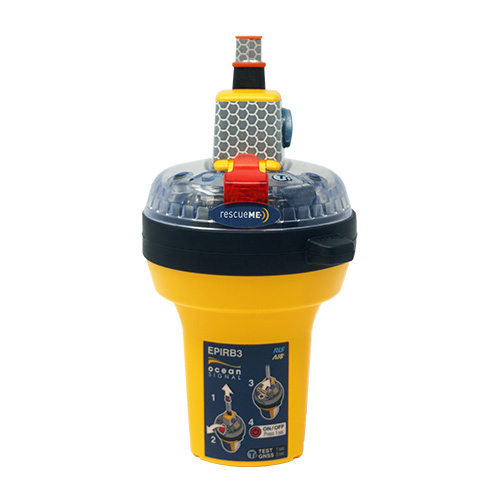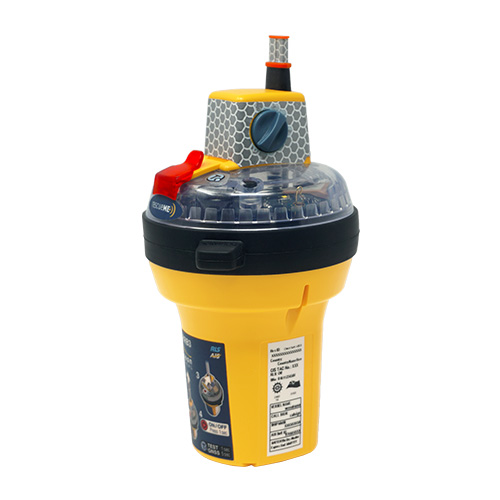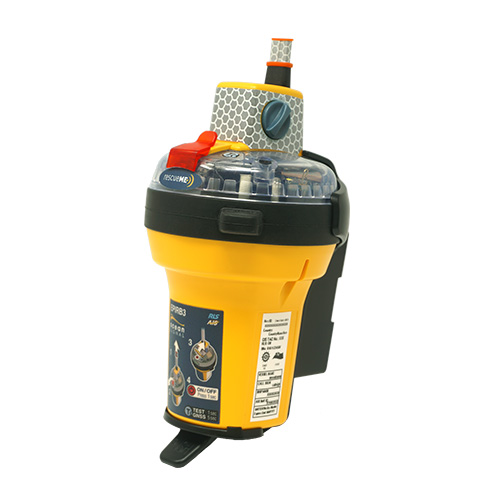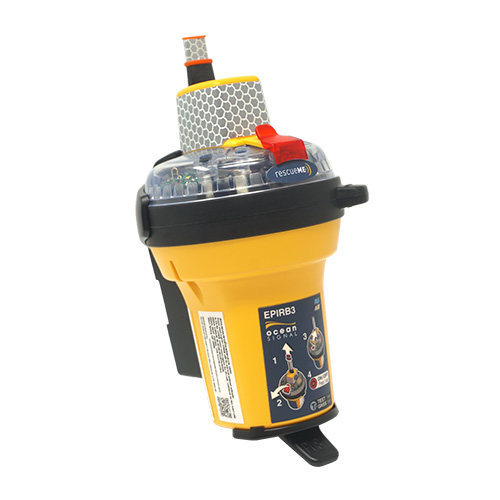EPIRB3
Beacon & SART & Distress Light & Searchlight Ref : OS-702S-03932rescueME EPIRB3 Emergency Position Indicating Radio Beacon EPIRB with AIS & RLS (Cat. 2 Class 2)
PRICE : 956,00 € With VAT (20%)Description

EPIRB3 Cat II EPIRB with AIS, RLS, and NFC

Rescue times can improve with Global activation combined with AIS Local beacon broadcast.
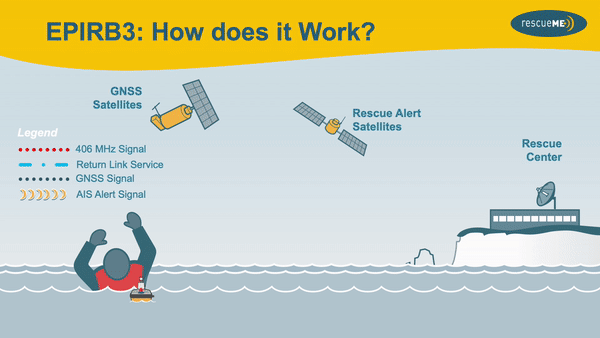
Near Field Communication (NFC) provides EPIRB diagnostics using a smartphone.
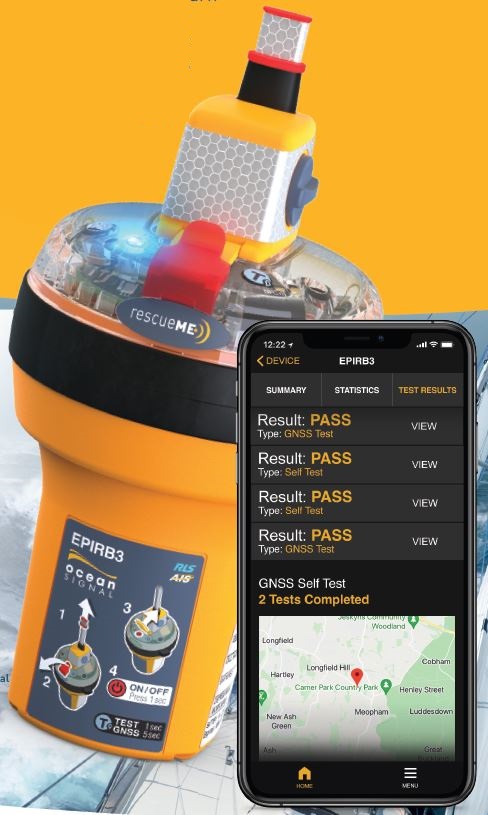
Convenient Return Link Service (RLS) tells users that their distress call has been received.
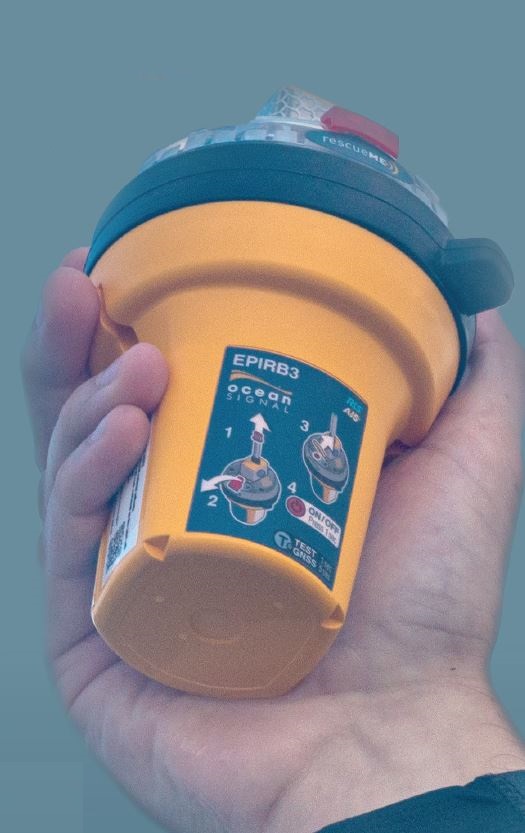
Mounting Bracket
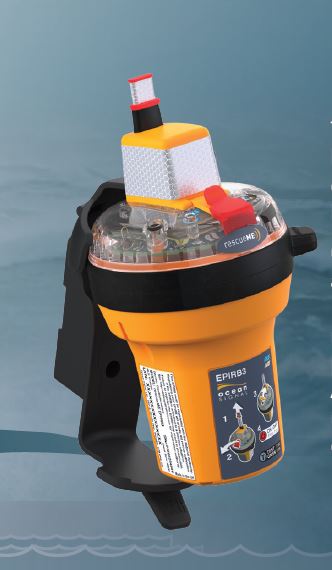
Product advantages
-
No Subscription is required
-
406 MHz Cospas Sarsat Distress Signal (MEOSAR Compatible)
-
121.5 MHz Local Homing Signal
-
AIS (Automatic Identification System) Alert
-
Smartphone connectivity via NFC (Near Field Communication)
-
Free Ocean Signal Beacon Mobile App
-
RLS (Return Link Service) Functionality
-
GPS | Galileo | Glonass GNSS
-
Strobe and Infrared Strobe
-
Global Coverage
-
Category II Manual Release bracket included
-
Small and lightweight
-
10-year battery life
-
>= 48 hours Operational Life
Features
|
Name |
EPIRB3 |
|
Product Description |
EPIRB with AIS, RLS, and NFC |
|
Model Number |
EPIRB3 |
|
Output Power (406/121.5) |
406.040 MHz, 5W (nominal) / 121.5 MHz, 50mW (nominal) |
|
AIS |
Automatic Identification System (AIS) Alert for Local Rescue |
|
RLS |
Return Link Service (RLS) confirmation direct to beacon |
|
NFC / Mobile App |
Near Field Communication (NFC) and Mobile App Included |
|
Strobe |
White & Infrared |
|
Size (antenna not deployed) ? Beacon Only |
6.8 x 3.6 x 3.1? 17.27 x 9.14 x 7.87 cm |
|
Weight ? Beacon Only |
0.42 lbs (190g) |
|
Battery |
Lithium battery, Li/FeS2 |
|
Battery Replacement |
10-year replaceable battery (replace 10 years after the date of manufacture or after activation) |
|
Temperature Range (Class 2) |
Storage: -22°F to +158°F (-30°C to +70°C) Operating: -4°F to +131°F (-20°C to +55°C) |
|
GPS |
72 Channel Multi-constellation receiver (GPS, Galileo, & Glonass GNSS) |
|
Activation |
Out of bracket and wet, or manually in or out of the bracket (Class 3 ? manual activation only ? no water activation) |
|
Waterproof |
33 ft (10 m) for 5 min. |
|
Buoyant |
Yes |
|
Operational Life |
48 hours minimum @ -4°F (-20°C) |
|
Deployment |
Category II - Manual Release |
|
Warranty |
2 Years (5 years if registered) |
|
Accessories |
Cat II Bracket (P/N 703S-01600) |
|
Approvals (pending) |
Cospas-Sarsat, FCC, RED, Canada, AMSA, New Zealand (see for full list of approvals) |
Technical characteristics
Battery replacement life (years) : 10
Brand : OCEAN SIGNAL
Category : II
Frequency : 406.037/121.5 MHz
Function : EPIRB
Identification System (AIS) functionality : YES
Integrated GPS : YES
NFC (Near Field Communication) : YES
RLS (Return Link Service) : YES
Type : EPIRB
WheelMarked : YES

